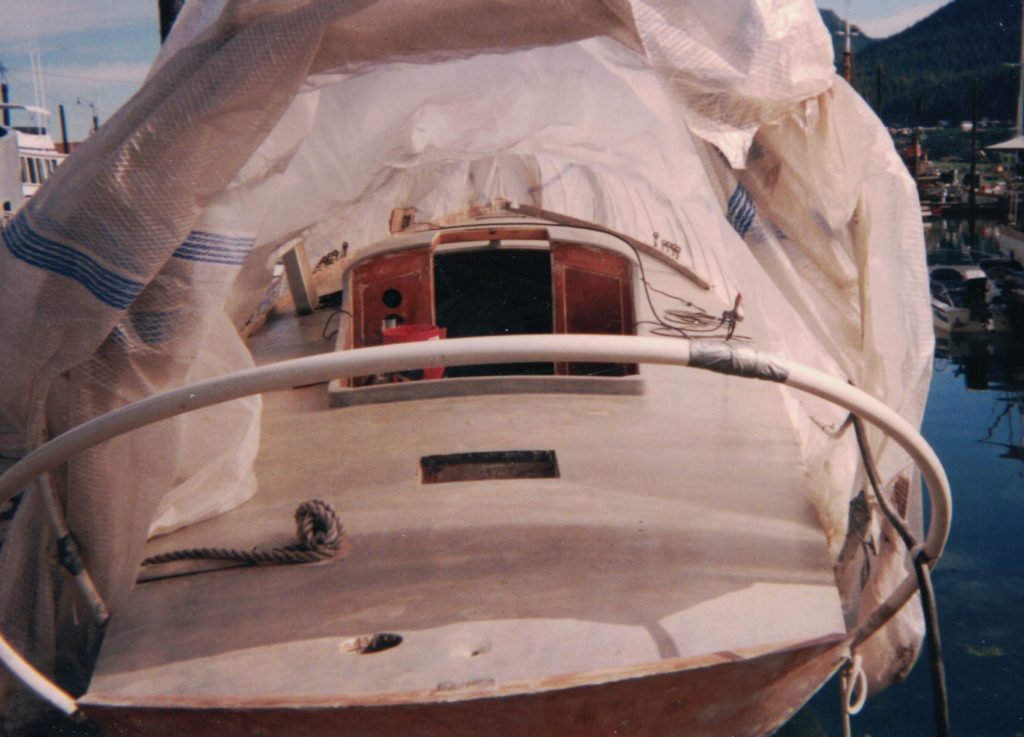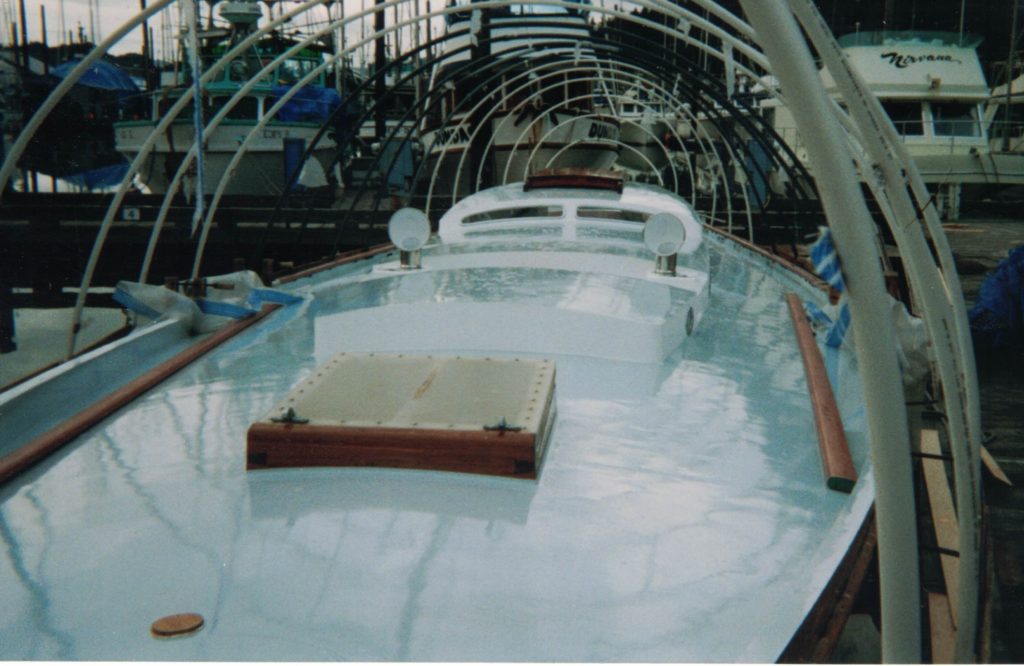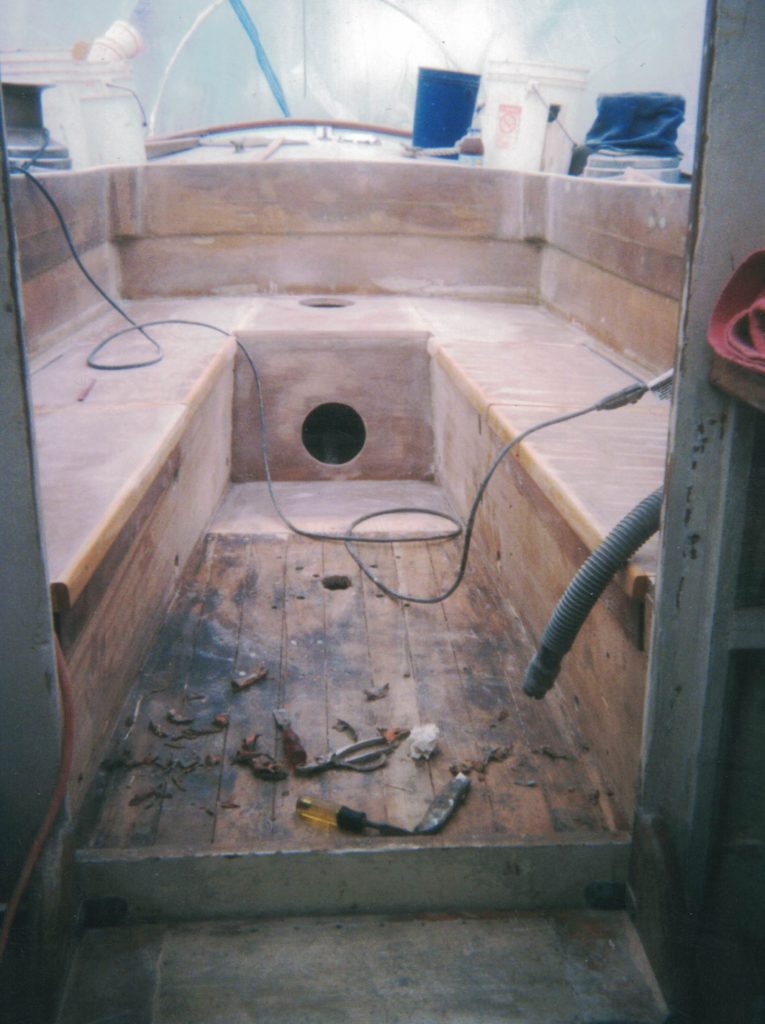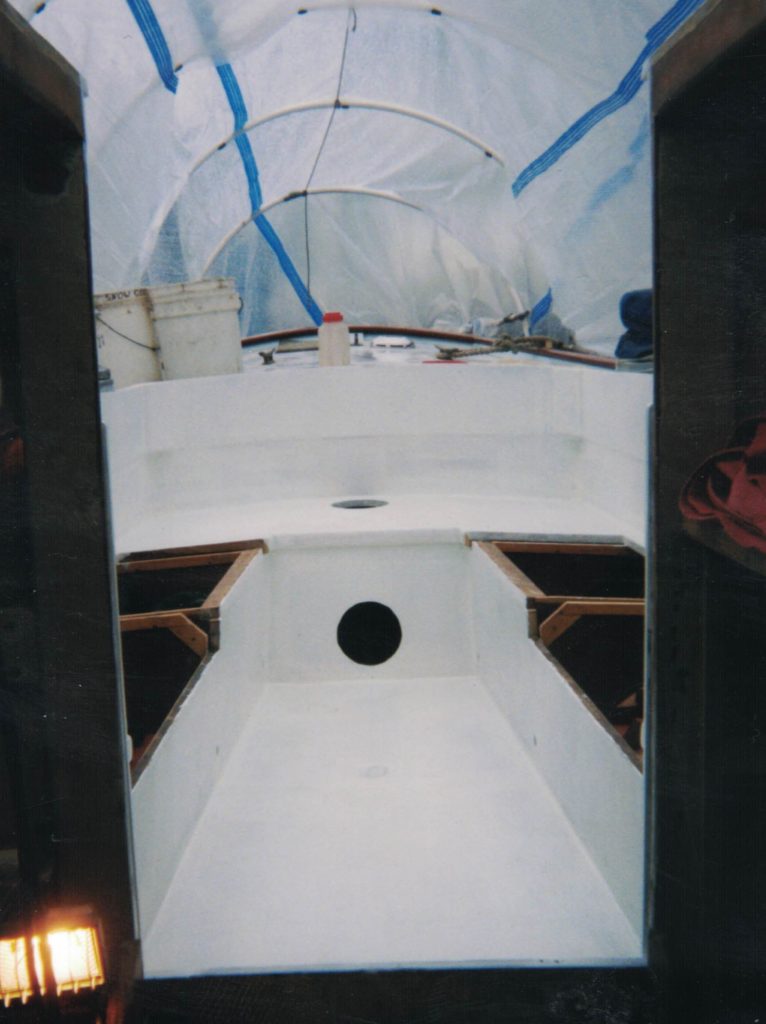If you’ve been following along, you know that by the time Dooley came to visit in 1996 that the deck was pretty well sealed up. We worked on the toe rail getting ready to mount it. The deck would have looked pretty much as it does in the photo below when Dooley visited.

The cloth and epoxy have been run out to the edge of the deck. The barrier coat (grey) has been completed. The toes rails would have gone back on with 3/8-inch bronze rod for bolts and the whole thing painted with sandable primer. I had decided to use Interlux two part paint for the cabin and deck. The primer chosen was their 404 Primekote. It sands easily to a nice finish and fills tiny pores. The whole surface would have been sanded, recoated and sanded until I was satisfied with the finish.

In the above photo the decks and cabin have been painted. The deck does not have any non-skid yet. The cap rails can be seen here, partially installed. The Dorade vents and hatches are in.

There is Herc, in the spot he liked best, keeping an eye on the work. The forward facing windows and their frames are in place in the photo above. The window frames are cast bronze (now chromed) that were made specifically for Leda.
Meanwhile, during this process of getting the deck to this point, I had to get the cockpit ready to go. When Dooley visited I had my plywood cut that was to become the cockpit benches and it was laying in place. But the cockpit sole was not finished and I still had some things to do to make the lockers. Leda had been sailing all these years with hinged lids covering the lockers that had no means of sealing or keeping water out. Everything in the lockers got wet and the water made its way to the bilge. I wanted to figure out how to prevent this.

In the photo above the cockpit floor is still raw wood but the cockpit seat lockers are being fitted. The large round holes toward the aft of the cockpit are for access to the rudder post and quadrant. You can see a smaller hole in the floor forward of that which is for the steering binnacle. At the aft ed of the cockpit there is a piece of plywood in the floor. This is where access was obtained for working on the shaft log for the rudder post.

The photo above is how this looked after it had been covered, faired and painted. The locker lids (seats) are out and some of the gutter detail can be seen here. The forward lockers got a lowered edge to make the opening larger as the original opening was pretty narrow. The main idea being that it needed to be wide enough to get my body through. I can still do it but it isn’t pretty getting me out of there. But that was the reason for opening those up.

In the above photo we are looking forward into the cockpit from the rear deck. The openings for the two lockers on each side can be seen. The gutters are made from plywood, two pieces each with a spacer between so there is an opening about an inch wide between. They are sloped at about 45-degrees. The idea being that if water comes into the cockpit (or rain for that matter) that the leeward side gutter will still have enough slope to drain into the cockpit. The locker lids have an edge that fits down into the gutter so all drips are contained.

And here we are looking forward into the cockpit with it all assembled. The piano hinge at the outboard (back) side of the lockers is covered with a strip of rubber roofing material to keep it water tight. This arrangement has worked out well. The binnacle is back in. This is a photo taken in the spring of ’98 as we prepare to haul out for the last push toward putting in the mast. Other than primary winches we have no sail handling gear on board yet. We have anchor points for the standing rigging. But we have a lot of work to do before our sails are delivered.
We’ll talk about that in the next section.
Next: Rigging and Sails
Previous: Bulkheads